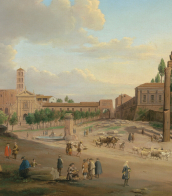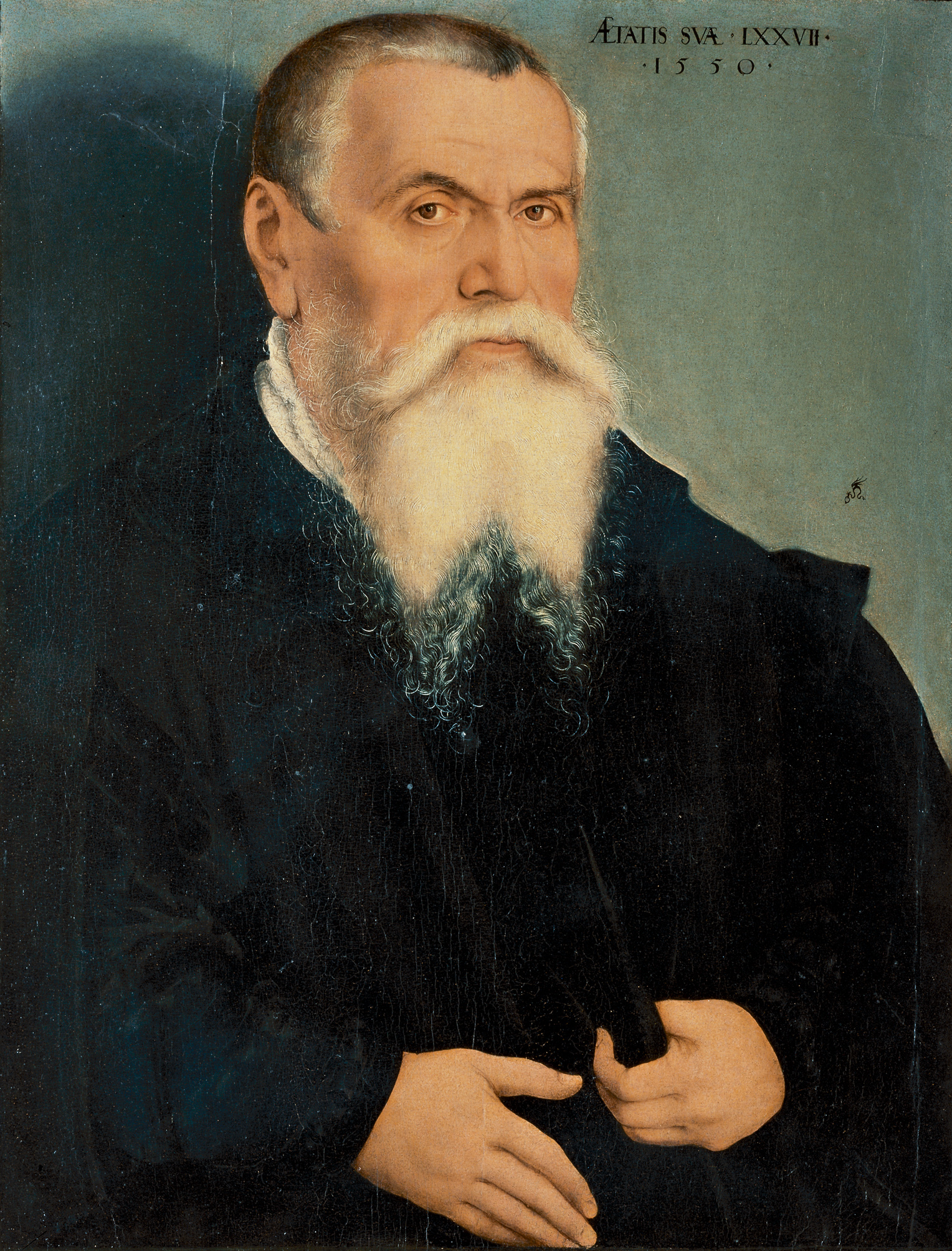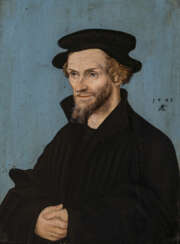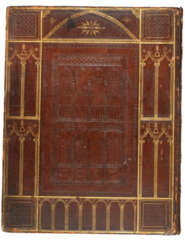497

Hans Holbein the Younger was a German-Swiss painter and printmaker who worked in a Northern Renaissance style, and is considered one of the greatest portraitists of the 16th century. He also produced religious art, satire, and Reformation propaganda, and he made a significant contribution to the history of book design. He is called "the Younger" to distinguish him from his father Hans Holbein the Elder, an accomplished painter of the Late Gothic school.


Hans Holbein the Younger was a German-Swiss painter and printmaker who worked in a Northern Renaissance style, and is considered one of the greatest portraitists of the 16th century. He also produced religious art, satire, and Reformation propaganda, and he made a significant contribution to the history of book design. He is called "the Younger" to distinguish him from his father Hans Holbein the Elder, an accomplished painter of the Late Gothic school.


Dirck Jacobsz was a distinguished Dutch Renaissance painter, known for his contributions to the Dutch Golden Age of painting. Born into a lineage of artists, Jacobsz honed his skills under the guidance of his father, Jacob Cornelisz van Oostsanen, before establishing his own reputation in the art world. The influence of Jan van Scorel, a fellow Amsterdam painter, is evident in Jacobsz's Mannerist style, contributing to his unique artistic expression.
Jacobsz's legacy includes notable works that have been celebrated for their historical significance and craftsmanship. Among these, "The Crossbowmen" (1529) stands out as his most important piece, marking a pioneering moment in Dutch history as the first militia portrait. This work, along with his other group portraits of civic guards, showcases Jacobsz's exceptional talent in capturing the essence of his subjects, contributing to the rich tapestry of Dutch Renaissance art.
His artistic journey was deeply rooted in his family's legacy, with both his brother Cornelis and his son Jacob Dircksz continuing the tradition of painting. This continuation of the artistic profession within the family underscores the significance of the Jacobsz lineage in the Dutch art scene. Dirck's work, deeply influenced by his surroundings and the prevailing styles of his time, encapsulates the transition of artistic identity through generations, reflecting both personal and societal narratives.
Dirck Jacobsz's contributions to the world of art are commemorated through his works housed in various museums, including the Amsterdam Museum, which showcases his militia paintings and the portrait of Pompejus Occo. These pieces not only highlight Jacobsz's skill and versatility as a painter but also offer insights into the social and cultural contexts of the Dutch Renaissance.
For collectors and experts in art and antiques, Dirck Jacobsz remains a figure of interest for his historical significance and the quality of his work. To stay informed about new discoveries, sales, and auction events related to Dirck Jacobsz, consider signing up for updates from art galleries and auction houses. This will ensure you have access to the latest information and opportunities to acquire works by this renowned Dutch Renaissance painter.


Hans Holbein the Younger was a German-Swiss painter and printmaker who worked in a Northern Renaissance style, and is considered one of the greatest portraitists of the 16th century. He also produced religious art, satire, and Reformation propaganda, and he made a significant contribution to the history of book design. He is called "the Younger" to distinguish him from his father Hans Holbein the Elder, an accomplished painter of the Late Gothic school.


Hans Holbein the Younger was a German-Swiss painter and printmaker who worked in a Northern Renaissance style, and is considered one of the greatest portraitists of the 16th century. He also produced religious art, satire, and Reformation propaganda, and he made a significant contribution to the history of book design. He is called "the Younger" to distinguish him from his father Hans Holbein the Elder, an accomplished painter of the Late Gothic school.


Hans Holbein the Younger was a German-Swiss painter and printmaker who worked in a Northern Renaissance style, and is considered one of the greatest portraitists of the 16th century. He also produced religious art, satire, and Reformation propaganda, and he made a significant contribution to the history of book design. He is called "the Younger" to distinguish him from his father Hans Holbein the Elder, an accomplished painter of the Late Gothic school.





Lucas Cranach the Elder was a pivotal figure in German Renaissance art. As a leading painter of Saxony, his influence spanned across the 16th century, making significant contributions through his paintings, woodcuts, and engravings. His artistic journey began under the tutelage of his father, Hans Maler, and saw him becoming court painter to the Elector of Saxony, where he produced a vast array of works including altarpieces, court portraits, and notably, portraits of Protestant Reformers.
Cranach's artistry was not confined to any single genre. He was renowned for his portraits of the aristocracy, deeply symbolic religious paintings, and engaging mythological scenes. His ability to capture the essence of the Protestant Reformation, notably through his portraits of Martin Luther, showcases his close connection to the movement and his role as a key figure in conveying its ideals through art.
A significant part of Cranach's legacy is his workshop in Wittenberg, which was a hub of artistic production. This workshop produced numerous works that bore his distinctive winged serpent signature, a mark of quality and innovation in the art of the period. Cranach's workshop was known for its efficient operation, enabling the production of a large volume of works that catered to the high demand of his time.
For collectors and experts in art and antiques, Lucas Cranach the Elder's work represents an intriguing intersection of art, culture, and history. His contributions to Renaissance art and his unique portrayal of religious and mythological themes continue to captivate audiences, making his work highly sought after in the world of art collection.
To explore more about Lucas Cranach the Elder's fascinating contributions to art and to stay updated on new discoveries or auction events related to his works, consider signing up for specialized updates. This subscription is designed for enthusiasts keen on delving deeper into the rich tapestry of Renaissance art and history, ensuring they remain well-informed of relevant sales and scholarly insights.




Hans Holbein the Younger was a German-Swiss painter and printmaker who worked in a Northern Renaissance style, and is considered one of the greatest portraitists of the 16th century. He also produced religious art, satire, and Reformation propaganda, and he made a significant contribution to the history of book design. He is called "the Younger" to distinguish him from his father Hans Holbein the Elder, an accomplished painter of the Late Gothic school.








![[HOLBEIN, Hans dit le Jeune (1497-1543)] ; [LÜTZELBURGER, Hans ( ? - 1526)] ; [CORROZET, Gilles (1510-1568)] ; [VAUZELLES, Jean de ( ? - v. 1563)]](/assets/image/picture_3807156/59396/408c4823fd9b5ec1f48bdc4eef452c581710234000jpg__fix_374_244.jpeg)
![[HOLBEIN, Hans dit le Jeune (1497-1543)] ; [LÜTZELBURGER, Hans ( ? - 1526)] ; [CORROZET, Gilles (1510-1568)] ; [VAUZELLES, Jean de ( ? - v. 1563)]](https://veryimportantlot.com/assets/image/picture_3807156/59396/408c4823fd9b5ec1f48bdc4eef452c581710234000jpg__fix_374_244.jpeg)
![[HOLBEIN LE JEUNE, Hans (c. 1497-1543)]](/assets/image/picture_4259558/f7542/c8okmvld6jz1abmo97qcr6yfqw5lvverhqj8gzunuroa2w0fbht5bwcidnsfiz1729408270jpg__fix_374_244.jpeg)
![[HOLBEIN LE JEUNE, Hans (c. 1497-1543)]](https://veryimportantlot.com/assets/image/picture_4259558/f7542/c8okmvld6jz1abmo97qcr6yfqw5lvverhqj8gzunuroa2w0fbht5bwcidnsfiz1729408270jpg__fix_374_244.jpeg)
![[LUTHER, Martin (1483-1546) et Hans HOLBEIN LE JEUNE (1497-1543)]](/assets/image/picture_4259584/4c4eb/3kd5xdxacqau4prgw6y1t5z6soba3uzal9wflgdoxiuf7gnfilk7wkak9f9moah1729408928jpg__fix_374_244.jpeg)
![[LUTHER, Martin (1483-1546) et Hans HOLBEIN LE JEUNE (1497-1543)]](https://veryimportantlot.com/assets/image/picture_4259584/4c4eb/3kd5xdxacqau4prgw6y1t5z6soba3uzal9wflgdoxiuf7gnfilk7wkak9f9moah1729408928jpg__fix_374_244.jpeg)






























































